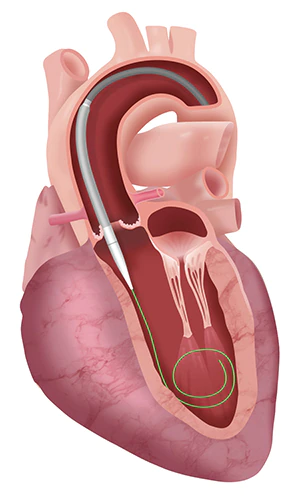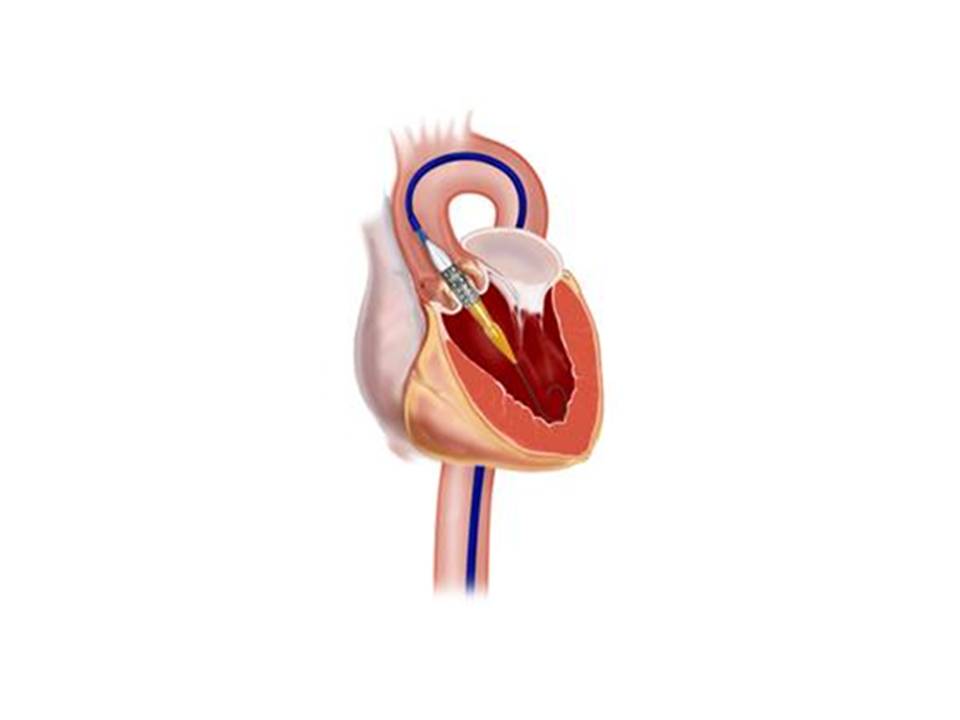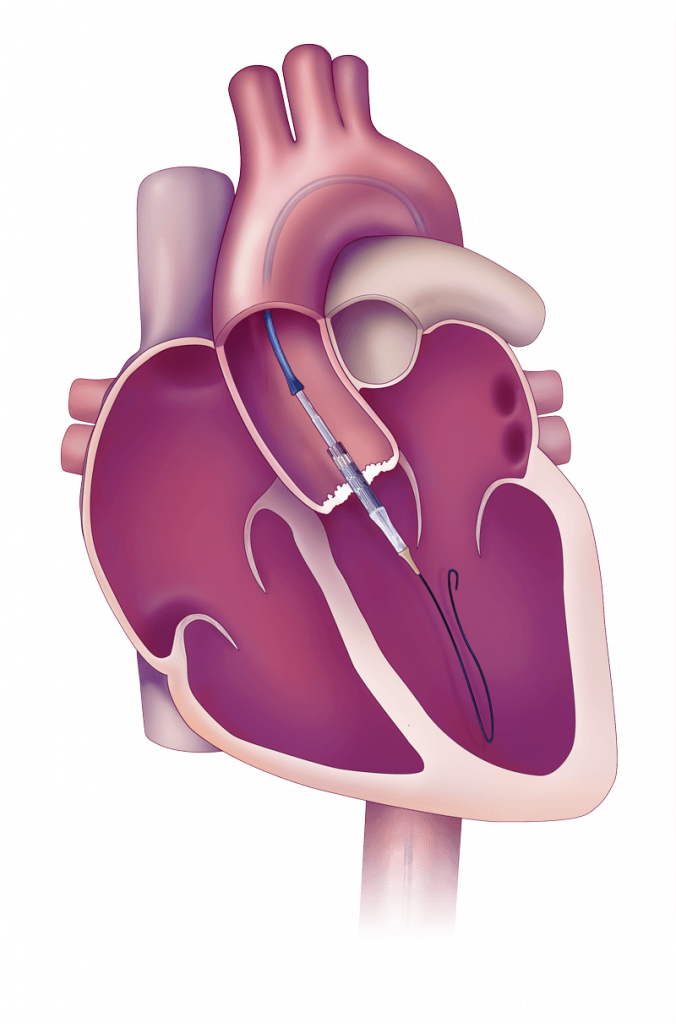
Healing Valves are pioneering in the field of heart health care using cutting-edge procedures and the most advanced technology. With innovative, high-quality care we offer a wide selection of minimally invasive and surgical procedures for heart conditions.
Aortic stenosis is among the most frequent heart valve conditions. It affects a large percentage of elders and if not treated it can cause heart failure and even death. Aortic stenosis that is mild are treatable with medication and lifestyle adjustments. However, for those suffering from serious symptoms the replacement of the aortic valve could be required.

What is TAVR/TAVI
Transcatheter aortic valve replacement/ implantation (TAVR/ TAVI) a minimally invasive surgical procedure to replace the aortic valve for patients suffering from severe aortic stenosis. This procedure is suitable in patients believed to be at a risk of serious complications following traditional open-heart surgery.
Aortic stenosis can be described as an increase in the thickness of the valve, which prevents its valve from completely opening. When the valve does not open correctly blood flow between the heart and the other organs is impeded. Patients with aortic narrowing may feel chest discomfort, breathlessness or fatigue and giddiness or falls. They may also experience swelling in their legs.
In the TAVR/ TAVI process, a brand new artificial aortic valve is inserted over a metallic cage and then loaded in a device.
Once the device has been placed correctly placed it expands and remains in place to act as a replacement to the damaged or diseased Aortic valve.

How is TAVR Differ from Traditional Heart Surgery?
In standard open-heart (cardiac) procedure the damaged valve completely removed and replaced by the artificial one. This is an important surgery that involves the surgeon making an incision through the chest and in the breastbone (sternum) in order to reach the aortic valve.
TAVR is not an extensive incision to the chest. The surgeon creates tiny incisions in the leg or chest to access a major artery. Thereafter the artificial valve that is attached to a catheter will be guided through the blood vessels and the artery to the Aortic valve.

Are You a Candidate for TAVR?
- These are general rules regarding TAVR that you and your physician to think about when deciding whether it’s a good option for you.
- TAVR is FDA certified for those with severe Aortic Stenosis.
- You could be a candidate for TAVR If:
- The stenosis in your aortic valve is severe.
- You’re experiencing symptoms such as chest pain and heart failure, as well as the feeling of fainting, and irregular rhythms.
- Your symptoms aren’t getting better with treatment.
You may not be a TAVR Candidate TAVR
- The aortic stenos is you have is mild.
- Your blood vessels and valve aren’t the correct dimensions to be used for TAVR.
- Your heart is weak or you suffer from other untreated heart-related issues.
- There are issues with your Aorta.
- You’ve had an attack on your heart within the last 30 days.
- You are suffering from a serious disease or infection.
- For patients who aren’t TAVR candidates Aortic valve replacement by making a small 5 centimeter cut in the chest’s upper region is an alternative option.
Benefits of TAVR
Since TAVR is a minimally-invasive procedure, it provides many advantages over open-heart surgeries.
- Less chances of requiring a ventilator
- Shorter time of procedure
- lower risk of infection
- Shorter hospital stays
- Faster recovery
- A lesser risk of trauma to the heart muscle and chest.
- Less respiratory and cardiac complications
- One-eighth of the blood loss from traditional open surgery

What to Expect During a TAVR Procedure
The patient will receive anesthesia (mostly local or short GA) which will allow you to be asleep during the procedure. In the course of the procedure, you will be given an intravenous (IV) medication to stop blood clots and heart and blood pressure will be checked.
The surgeon will create an incision small enough in groin to find the artery. The catheter will be inserted in the artery and guided by X-ray technology until it is able to reach the Aortic valve. When it is at the right position the valve that is created will expand and be secured inside the valve that is already in place.
Once the artificial valve is in place the surgeon will take out the catheter and then close the opening.

Risks and Side Effects of TAVR
As with all procedures there are risks with TAVR. Patients can be afflicted by:
- Bleeding
- Infection
- Problems associated with the artificial valve such as leakage or dislocation
- Heart arrhythmia
- Heart attack
- Stroke
- Need for a pacemaker


After the Procedure
You should expect to stay at the hospital around one day. If there are questions regarding your recovery the hospital stay could last longer. It could be that your stay will include time in the ICU.
It is essential to make healthy lifestyle changes following the TAV procedure. Healthy eating and exercising regularly, not smoking cigarettes and keeping a healthy BMI are all vital to the health of your heart. It is also important to keep appointments with your doctor and use any medication you’re given.
Following a TAVR procedure, you will notice significant improvement in your symptoms. Things like breathing problems and chest pain will improve, which will enhance your overall health.
Every valve patient deserves a heart team approach and opinion
We are here as a team of eminent cardiologist and cardiac surgeons well experienced in treatment of Valve disorder patients.
Our main motto is to provide advanced care to every valve patient after an opinion of 3 cardiologist, 2 cardiac surgeons, cardiac anesthetist and TAVI specialist
Our spectrum of treatment includes
- TAVI/ TAVR
- Valve replacement surgery
- Mitral clips
- Tricuspid valve implantation
- Tricvalve implantation
With the current advance in valve replacement therapy it is our goal to provide the latest technology to the patients and give them the joy with ease of treatment.
Every valve patient deserves a heart team approach and opinion.
We are here as a team of eminent cardiologist and cardiac surgeons well experienced in treatment of Valve disorder patients.
Our spectrum of treatment includes
- TAVI/ TAVR
- Valve replacement surgery
- Mitra clips
- Tricuspid valve implantation
- Tricvalve implantation
With the current advance in valve replacement therapy it is our goal to provide the latest technology to the patients and give them the joy with ease of treatment.
